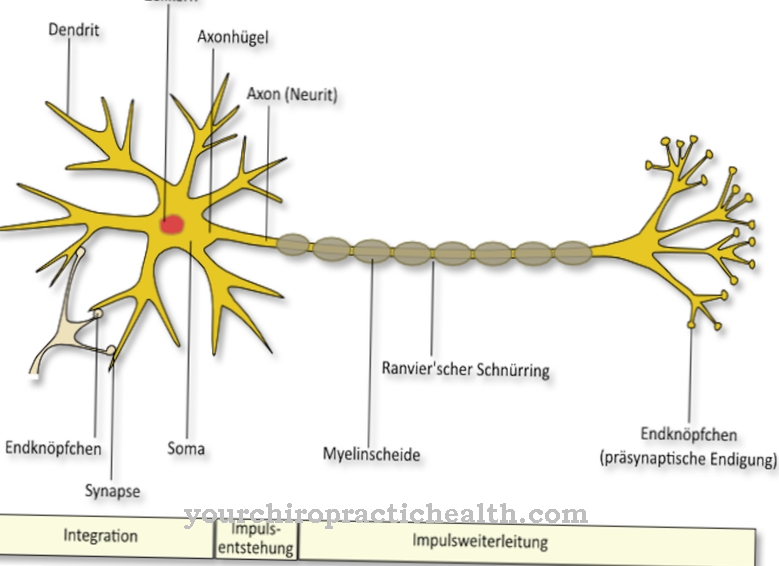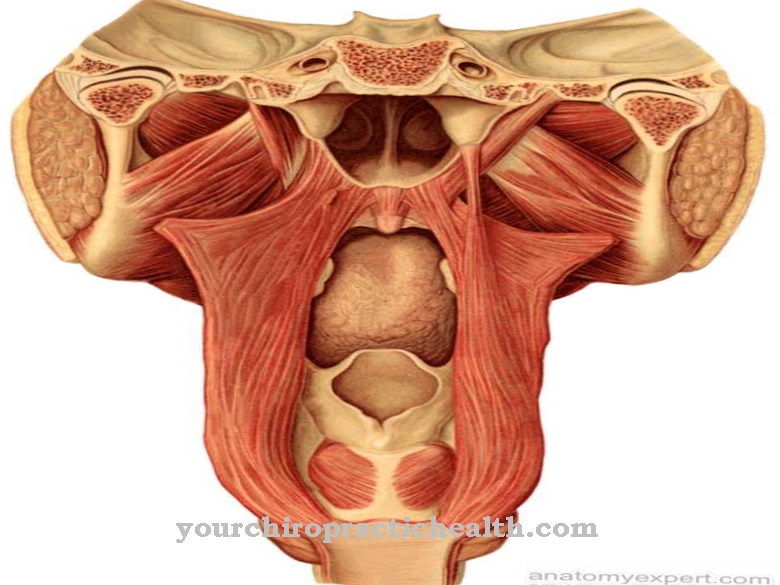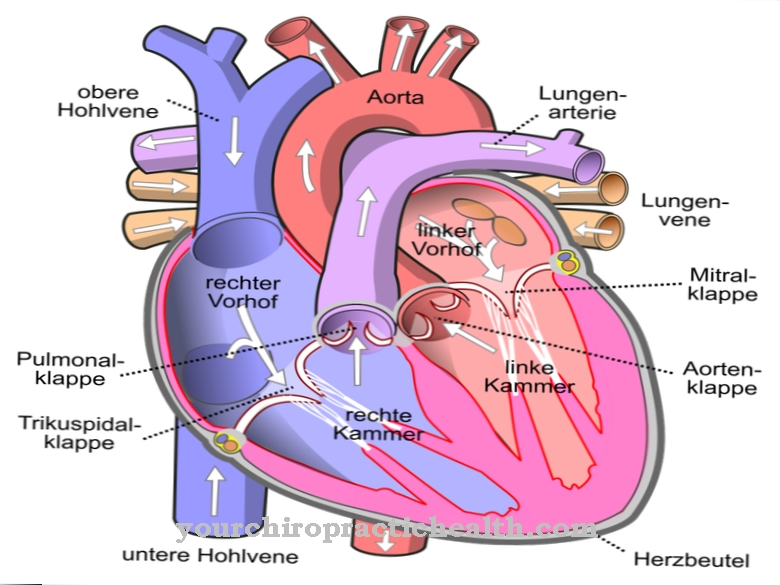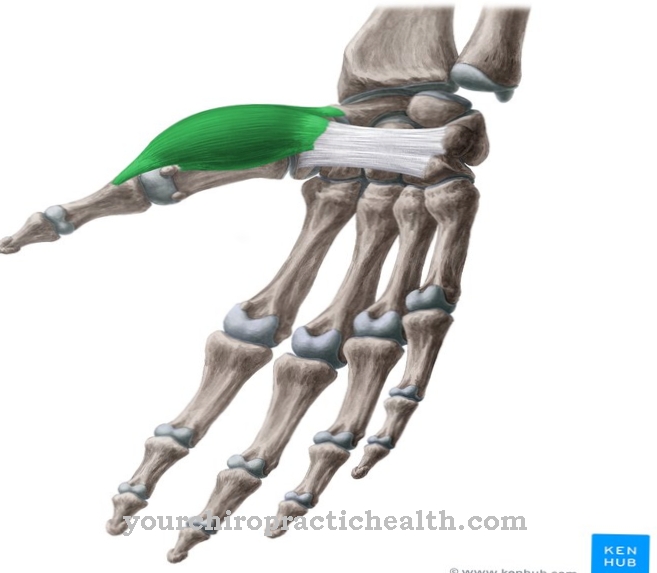The Pubic bone belongs to the bones of the body and forms the pelvis together with the hip bone and the iliac bone. Together with the other pelvic bones, it also forms the hip socket. It is lower for women than for men.
What is the pubic bone?
The Pubic bone (Latin Pubis called) refers to a bone of the pelvis. In addition to the pubic bone, this is also made up of the hip bone and the iliac bone. The pubic bone is located on both sides of the pelvis and meets at the front at the pubic symphysis.
It is also part of the hip joint - which it forms with the two pelvic bones - and represents the origin of some muscles that are part of the structure of the pelvic floor. The pubic bone is lower in women than in men.
Anatomy & structure
The pubic bone forms the front part of the acetabulum (Acetabulum called), which together with the head of the thigh (Head femoris) forms the hip joint. The front edge of the pubic bone is also called the Pecten ossis pubis (Pubic crest) titled.
The so-called midline, which marks the connection between the two pubic bones, is often also called the symphysis. The pubic bone is found on both sides of the pelvis and comes together on the front side via a fibrous cartilaginous connection (pubic symphysis). Since this connection consists of fiber cartilage, the two pubic bones can be moved minimally against each other.
Two pubic branches adjoin the pubic bones. These are medically called Superior ramus (the upper branch) and Ramus inferior (the lower branch) of the pubic bone. These two branches represent the connections to the adjacent bones and are therefore part of the hip joint. The upper branch, on the other hand, is connected to the iliac bone (Os ilium called) connected, while the lower branch (medical Ramus inferior ossis pubis) with the ischium (Latin Os ischii) connected is. Unlike the fibrous cartilaginous connections between the two pubic bones, these transitions are bony and immobile. The pubic crest is characterized by a small hump at the transition to the midline, which is called Pubic tuberosity referred to as. This serves as the starting point of the inguinal ligament. The pubic ridge ends laterally in another cusp (Eminentia iliopubica). This hump forms the border with the iliac bone. The pubic bone also limits the anterior arch of the Obturator foramen (a large opening in the basin).This hole is made by two skeletal muscles from the group of the deeper hip muscles (Obturator externus muscle and Obturator internus muscle) locked. Only a minimal channel remains open, that of Obturator canal is known. A lumbar plexus nerve (the Obturator nerve) as well as a vital vein and artery of the thigh and pelvic region - medically these are called the vena and arteria obturatoria. The pubic bone-coccyx muscle also originates from the pubic bone (Pubococcygeus muscle), of the Transversus perinei profundus muscle (a muscle of the pelvic floor) and the Puborectalis musclewhich, like the pubic and coccyx muscles, is also an important part of the pelvic floor muscles.Function & tasks
Since it is an important part of the entire pelvis and the hip joint, the pubic bone plays a major role in supporting the body. The pelvis is known to be important for the ability to walk upright, but breathing and correct posture are also heavily influenced by the pelvis. It is for this reason that the pubic bone also acts on these things.
But there is another reason why the training and health of the pubic bone can have both negative and positive effects on the support function and the musculoskeletal system of the body. Because the pubic bone is built up over the iliac bone and ischium. As a result, it is attached to the spine as part of the pelvic ring.
Illnesses & ailments
There aren't many known diseases that are directly related to the pubic bone. However, that does not mean that the pubic bone cannot be affected by a variety of bone, tendon and muscle diseases.
The pubic bone, on the other hand, is often plagued by overload, as it is often very heavily used due to its great role in supporting the body. If the pelvis is overloaded, this can cause inflammation in the pubic bone.
This usually manifests itself in severe pain that begins in the pubic area and quickly spreads to the groin and lower abdominal muscles. Such an inflammation occurs quite frequently in athletes such as football players, which is why this disease is colloquially known as football disease.
Inflammation of the pubis is also not infrequently diagnosed during pregnancy due to the high stress on the pelvis. The reason for this is the baby, which, due to its steadily growing size, is putting increasing pressure on the pelvic area.
This stretches the bone, which in turn can lead to inflammation, but also to slight tears in the surrounding pelvic bones - the pubic bone is very often affected by this. Most of the time, however, these types of injuries or inflammations heal within a few weeks with the right care and correct medical treatment. During this time, however, people should not lift too hard and avoid spreading their legs too much.



























